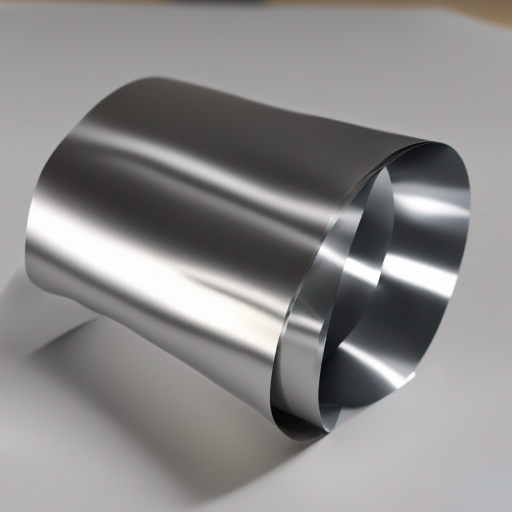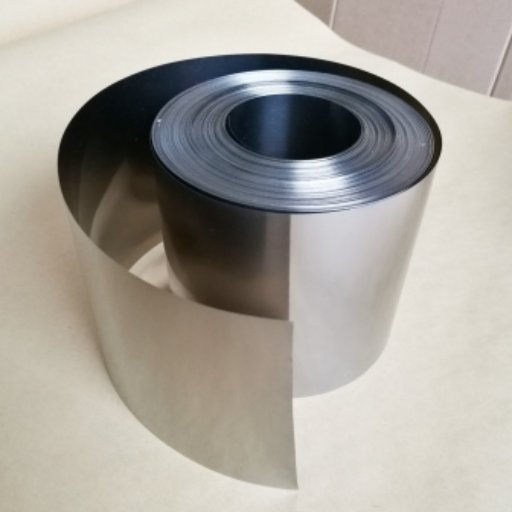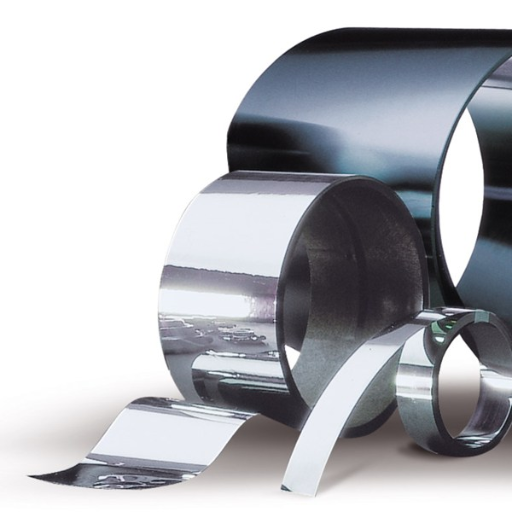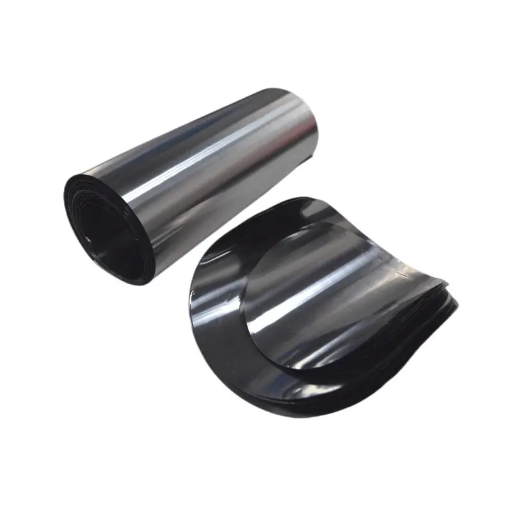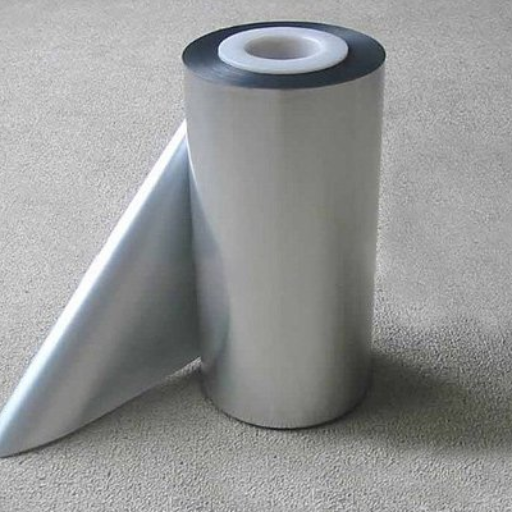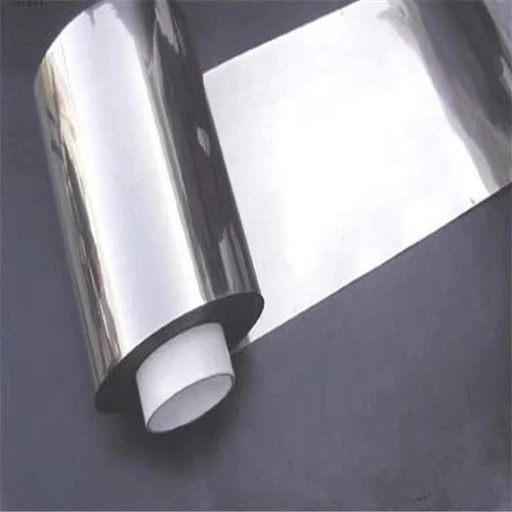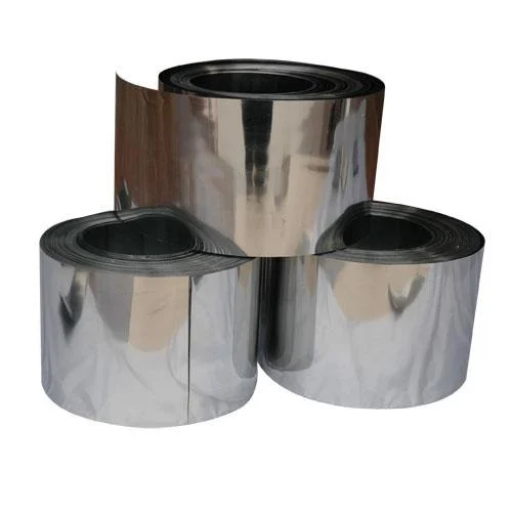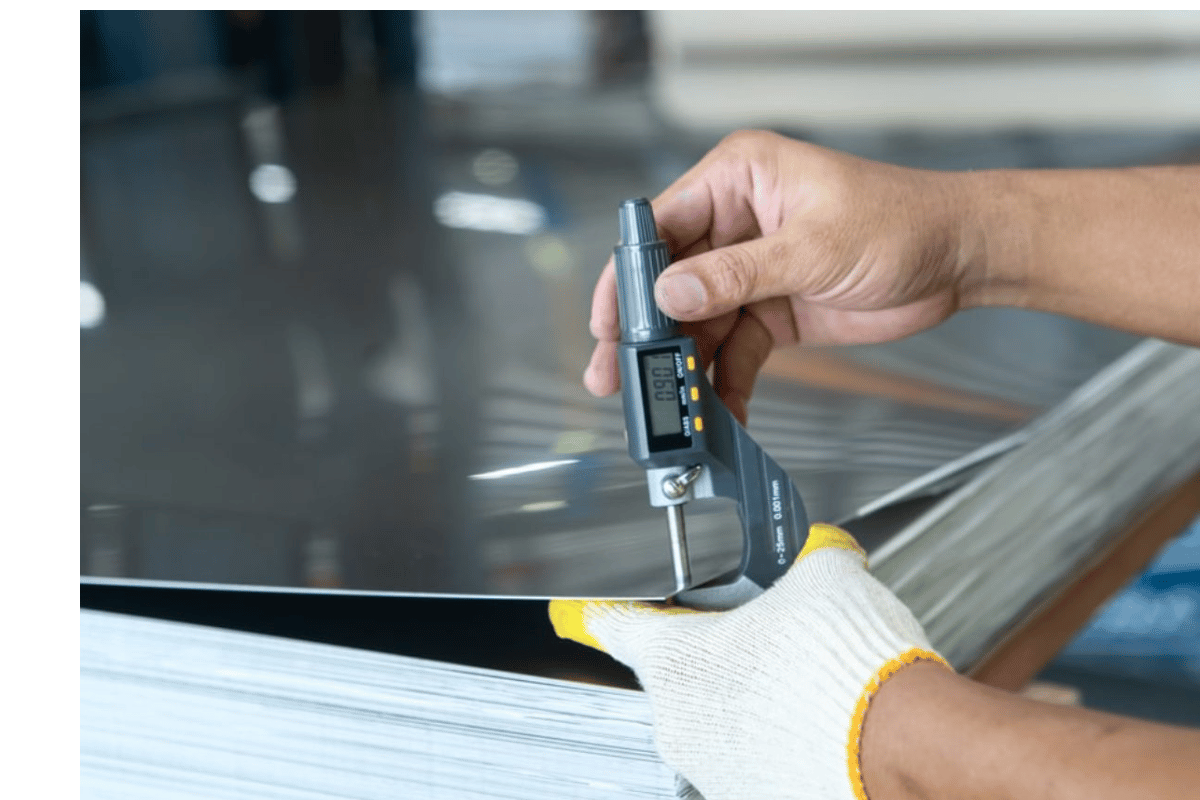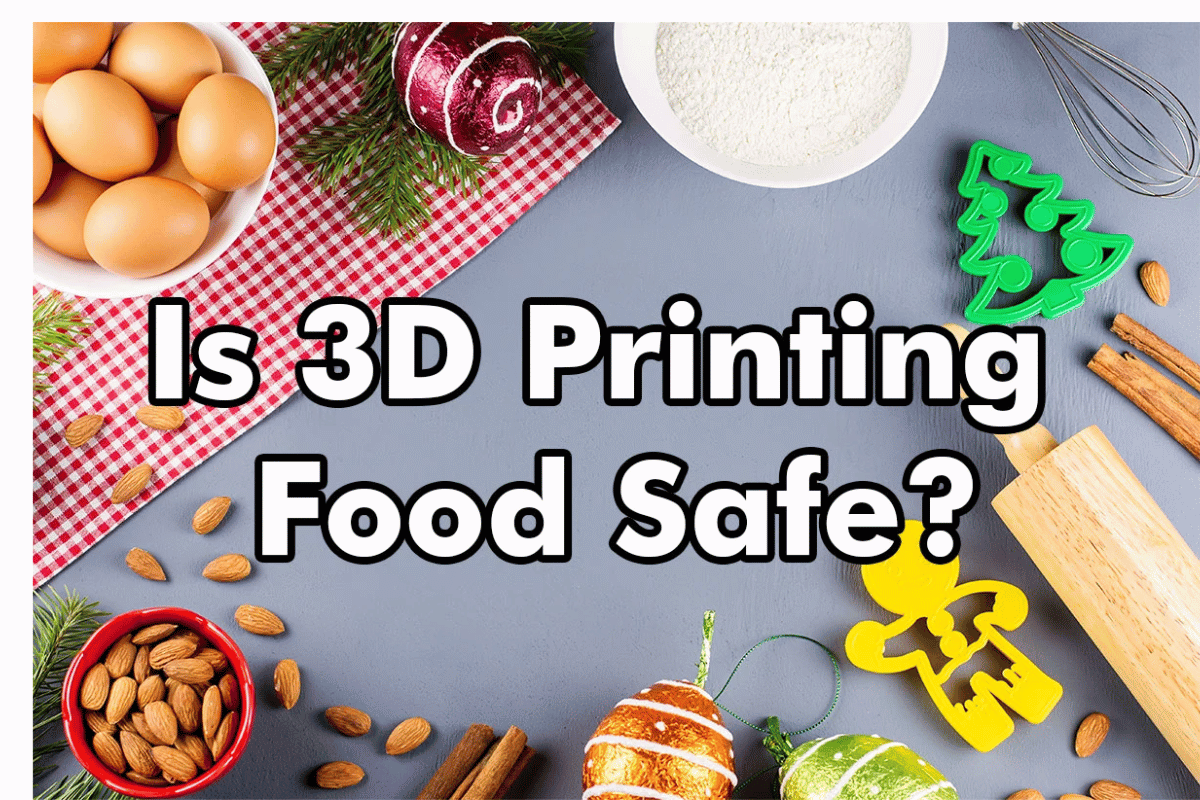A unique item among other advanced materials is tantalum foil, because of its amazing features and uses. This manual sets out to shed light on the complex world of tantalum foil by looking at its special features, the science behind its high purity as well as the recent innovations in various industries that use it. We will take you through the tantalum foil production processes, explore its importance in modern technology and look at some of the new discoveries that are stretching the limits of what can be achieved with this amazing material. Whether you work in industry or academia or are interested in advanced materials; this guide aims to provide useful insights for you to better understand how tantalum foils can be employed.
What is Tantalum Foil and Why is it Used?
The Enigma of Tantalum Foil and its Exceptional Features
As a knowledgeable industry insider, I can confirm that tantalum foil is an extremely valuable material for various high-tech applications. Tantalum itself is a scarce hard metal famous for its excellent resistance to corrosion and its high melting point. This renders tantalum foil indispensable in situations where ordinary materials would not survive extreme conditions. Common uses include electronics, which rely on it to make capacitors as well as high performance resistors capable of charging and discharging energy at a very fast rate. Furthermore, the fact that tantalum is biocompatible means that it can be used in medical implants. In short, however harsh the environment may be, tantalum foil remains both integral and effective.
Why Tantalum: High Melting Point and Corrosion Resistance?
As an industry expert, one of those questions I am often asked is why people prefer using tantalum when seeking materials with elevated melting points combined with exceptional resistance to corrosion. First and foremost, tantalum has a melting point at an impressive 3017 degrees Celsius, making it one of the most refractory metals in existence today. Thanks to this characteristic feature it can maintain structural integrity even when subject to very high temperatures such as those found in electronics (like capacitors), aerospace engineering or chemical industries.
Additionally, exceptional ability of tantalum to resist corrosion results from formation of stable oxide film upon its surface thereby protecting against almost all acids and alkali solutions hence ideal for use in corrosive environments by this aspect alone. Meanwhile using materials like this also enhances equipment life-span ensuring longer equipment life-span while enhancing process efficiencies because they are prone to highly reactive chemicals thus among other things resulting into higher production costs thereby reducing profitability in competitive markets . Combining these features makes tantalum a reliable innovation leader against demanding background.
Purity Matters when Using Tantalum Foil
As someone who knows his stuff, I can state categorically that the purity of tantalum foil is crucial in its applications if it has to function properly and for long. For example, even a small amount of impurity could greatly affect its properties leading to poor corrosion resistance or low melting points. In critical environments like aerospace or medical use where precision and dependability are required, even tiny amounts of contaminants can cause catastrophic failures. So choosing high-purity tantalum foil is no longer a matter of choice but rather an obligatory requirement. Tantalum’s reliability and efficiency in these conditions can only be supported through rigid quality control measures and advanced purification processes. The highest level of purity ensures that the material displays the best characteristics hence ensuring that end products are reliable, safe and durable.
Understanding the Specifications of Tantalum Foil
Deciphering the meaning of ≥99.9% purity and metals basis
To understand what “≥99.9% purity and metals basis” means, it is important to evaluate the quality of tantalum foils. I will break down this specification in a simplified manner as an expert in the industry.
Firstly, “≥99.9% purity” implies that at least 99.9 percent by weight consists of pure tantalum metal foil. Such level of purity is significant because higher levels mean fewer impurities that might compromise performance of the material. The remaining part which may be 0.1% or slightly less may contain traces of other elements.
Secondly, “metals basis” denotes that the given purity (99.9%) only applies to metallic impurities and does not consider gaseous impurities such as hydrogen, oxygen and nitrogen for instance; this distinction matters for high- performance applications.
The following are the relevant parameters for this specification:
- Purity Level: No less than 99.9 percent content of tantalum
- Metallic Impurities: Total amounts should be limited to less than 0.1% trace metal elements combined together within their gross compositions on a concentric basis.
- Non-metallic Impurities: Purity percentages do not include substances such as hydrogen, nitrogen, and oxygen which require separate testing.
It is critical that these standards are met so as to maintain high quality required for demanding applications where any deviation could jeopardize safety, endurance and operation.
Dimensions and thickness: From 0.025mm to 0.001in foils
Often, as a guru of industry, people ask me questions about the sizes and thicknesses that are available for tantalum foil. The thinness of tantalum foil can be as little as 0.025 mm or even 0.001 inches. Its wide range permits its usage in different spheres such as medical tools and high-tech devices.
As per my experience, it is vital to select the correct thickness with regard to what one wants his/her project to be. For example, thinnest foils (around 0.001 inches) are perfect for applications requiring exact precision and delicate workability including microelectronics. Slightly thicker ones up to 0.025mm may be preferable in certain cases where there should be a trade-off between flexibility and strength like air craft parts.
When you understand and choose the right dimensions and thickness of tantalum foil for your specific needs your applications will have optimum performance and reliability.
Tantalum foil grades and their applications
What are the different grades of tantalum foil and their specific applications is a question I am often asked as a specialist in this industry? Tantalum foil is commonly categorized into different grades basing on its purity and mechanical properties. The leading grades we deal with include Ta1, Ta2 and TaW (tantalum-tungsten alloy).
Ta1 grade, which has a very high purity exceeding 99.9%, is highly preferred for medical uses such as surgical instruments and implants where biocompatibility and corrosion resistance are important.
Ta2 grade has slightly lower purity but it is stronger and more durable compared to most other types. This grade finds broad application in chemical processing industry working well in aggressive environments like heat exchangers or reactor vessels.
The addition of small amounts of tungsten to the alloy enhances the mechanical properties making TaW (Tantalum-Tungsten Alloy) ideal for use in high-strength applications. Many components used in defense sectors and aerospace have to withstand extreme temperatures and stresses.
Through understanding the distinctive features as well as aptitudes of each type of tantalum foil, you will be able to make more informed choices resulting into better performance and efficiency of your projects.
Applications of Tantalum Foil in Technology and Industry
Tantalum foil in capacitors: Powering the electronics industry
Tantalum foil is crucial in capacitors because of its extraordinary electrical properties. As a matter of fact, I have always insisted as an expert that tantalum capacitors are highly renowned for having a high capacitance value but with small sizes which is important in today’s miniaturized electronic devices. The wide temperature range over which tantalum capacitors provide stable performance makes them suitable for many applications including consumer electronics such as smartphones and laptops, and more harsh environments like automotive and aerospace.
Further still, tantalum foil guarantees low leakage current and high reliability through its great conductance, and ability to form stable oxide layer thus making this type of capacitor ideal for certain applications where failure can lead to disastrous consequences for example military equipment or medical devices. By this way manufacturers can meet the ever-changing requirements of efficiency, reliability and longevity that come with fast evolving electronic industry by exploiting the uniqueness of Tantalum Foil in Capacitor productions.
How tantalum foil is revolutionizing medical devices and implants
As an industry expert, I am here to tell you that no other material can revolutionize medical devices and implants like tantalum foil with regard to biocompatibility as well as corrosion resistance. Tantalum does not react with body fluids or tissue hence it is considered chemically inert; this reduces the chances of complications arising from biological response significantly. This metal is often used in surgical implants such joint replacements (hip/knee) as well as vascular stents designed for long term implantation.
Also, unlike other metals used for creating intricate and customized medical instruments among others that may be made out of several units put together due to their brittleness etc., tantalums flexibility coupled durability ensures creation of complex structures within one piece only. Another point about it is radiopacity meaning how visible it becomes under X-Rays; this offers additional safety option so doctors may monitor condition of an implant in place during many years without doing any invasive procedure. The medical field benefits from this type of tantalum foil which is neither simple to come by nor easy to work with, for it enables the development of more advanced treatments that lead to better patient outcomes.
The role of tantalum foil in automotive and aerospace advancements
As a professional myself, I can not hesitate but admit how much tantalum foil has helped revolutionize these sectors including the automotive and aerospace industry. Tantalum’s excellent resistance to corrosion and heat makes it a preferred material for high performance engine parts and exhaust systems used in car manufacturing. The next-gen fuels-saving engines must feature prolonged efficiency and reliability resulting from their ability to bear excessive temperatures without degradation which is where tantalum plays a significant role.
In aerospace sector, there are rigorous requirements for materials that should be able to withstand harsh environmental conditions as well as heavy mechanical stresses which can be effectively addressed using tantalum foil. For example, its high melting point along with thermal/mechanical stability ensures production of such items like turbine blades or heat shields used in aviation applications. These components require properties related low weight such as those exhibited by tantalum so as to attain best overall aircraft performance and fuel economy.
Both automotive industries and aerospace industries may make great advancements on durability, safety and energy efficiency through the application of tantalum foils into crucial parts.
Safety and Handling of Tantalum Foil
Understanding the Material Safety Data Sheets (MSDS) for tantalum
Being an expert of the industry, I realize the significance of reading comprehensively the Material Safety Data Sheet (MSDS) for tantalum. These papers are necessary to have information on probable hazards, safe handling methods and emergency responses that may be associated with tantalum. Tantalum is a relatively inactive and stable metal but its properties and potential dangers must be known.
The MSDS states that when handled correctly tantalum has minimum health risks. However, like any other fine particle material, present dust should be treated in such a way as to avoid inhaling it or getting into contact with skin over a long period of time. Therefore, proper ventilation systems should exist within working areas as well as the use of appropriate personal protective equipment (PPE) such as gloves, masks and goggles.
In case something goes wrong unexpectedly while using this substance, first aid procedures recommended by the Material Safety Data Sheets will guide you accordingly. For example, if your eyes come into contact with tantalum dust you should wash them right there and then or you seek medical attention in case the irritation still remains. Similarly if one inhales this substance moving out to open air would be ideal accompanied by seeking medical assistance for breathing problems.
One can ensure an environment conducive for work by studying MSDS for tantalum; hence being able to take proactive steps for mitigating any risks related to its handling or usage.
Best practices for handling and storing tantalum foil
As a professional in the industry, I have discovered that there is a need to handle and store tantalum foil with utmost care in order to maintain its integrity and protect the employees. Some of the best practices that I follow include:
- Clean and Dry Environment: It is always my habit as an expert to keep tantalum foils in areas free from dirt and water so as to prevent oxidization and contamination. Such things like too much moisture or exposure into corrosive substances will lead to poor quality.
- Proper Labelling: Labeling every batch of foil with details such as thickness, width, lot number, etc makes it easy for identification of foils hence helps in inventory management and quality control.
- Protective Packaging: To prevent any physical harm, I always ensure that tantalum foils are kept in protective packages. Acid-free tissue papers or polyethylene bags may be used for this purpose; this will prevent them from getting scratched up or contaminated.
- Handling with Care: While working on tantalum foil, I make use of tools that do not cause abrasion but rather require precision. Thus plastic tweezers can be employed while donning gloves made of rubber which prevent oiling or exposing dirt on hand to such surfaces during handling.
- Temperature Control: The storage area’s temperature should be kept moderate as well as constant so as not to let thermal expansion or contraction distort or damage the foil.
- Regular Inspections: At regular intervals, inspection should be carried out on stored tantalum foils in order to identify early signs degradation or contamination by elements interfering with its effectiveness thus maintaining good-quality standards.
Through these steps, I can safely manage and store tantalum foils without distorting their characteristics making them ideal for various applications.
Recycling and Disposing of Tantalum: Environmental Concerns
As an expert in this field, I’m aware that not only is recycling tantalum critical for economic reasons but it also helps to promote environmental sustainability. This reduces the demand for new mining activities which can be environmentally disruptive through harvesting tantalum from used components. However, discarding the tantalum requires adherence to strict environmental guidelines to avoid any negative repercussions. In disposing of tantalum, I follow hazardous waste disposal regulations that ensure proper treatment and neutralization for all wastes. By emphasizing recycling and responsible disposal, we should be able to significantly reduce the impact on the environment resulting from tartaric production and consumption.
Where to Buy and How to Choose Quality Tantalum Foil
Goodfellow and Sigma-Aldrich are examples of suppliers that can help a person navigate the market.
For an expert in the industry, it is very important to choose a proper supplier for quality and reliable tantalum foil. Notably, some renowned suppliers in this market include Goodfellow and Sigma-Aldrich who both have variety of tantalum products.
Goodfellow is known for its accuracy as well as rigorous quality control standards which make it a dependable choice. In their catalogue, they have many types of tantalum foils that can meet diverse specifications especially in application. When I need my project to be pure materials with constant physicals I contact Goodfellow.
Other reliable sellers such as Sigma-Aldrich possess huge stocks and branch network. They provide elaborate description forms about their products together with technical assistance, invaluable when dealing with complicated assignments. Sigma-Aldrich has attractive pricing scales because it can serve both large-scale manufacturing and small-scale production factories.
In order to choose between these two suppliers, I consider aspects like material specs, delivery timelines, post-purchase services and cost implications among others. Taking into account these factors helps me ascertain the most suitable type of tantalum foil that will enhance my success in various projects.
Quality evaluation: What to consider in tantalum foil suppliers
In evaluating the quality of tantalum foil suppliers, I begin with checking out its purity levels and composition because these are crucial in applications where accuracy and dependability are key. I also scrutinize the supplier’s quality control protocols to make sure that the foil always meets standards. This is achieved when there are detailed test reports available as well as certification like ISO compliance which gives me the confidence required for it to work as expected.
Another critical factor in my decision making process is customer service. My emphasis is on vendors who provide responsive and knowledgeable technical support because this can be vital while troubleshooting or seeking advice about material properties and applications. Furthermore, delivery timelines are compared together with logistic capabilities so that I am assured that there will be no delay due to shortage of products.
Though cost is important, I consider this against the factors given above before making a well-rounded decision. Paying more at times becomes an investment for high quality, reliable delivery and outstanding customer services that one can rely on for a long time. It therefore requires assessing such criteria closely in order to opt for a tantalum foil vendor who aligns with my project specific requirements and general goals.
Quality assurance importance of trace metals basis and lot numbers
For materials such as Tantalum foil, it is important as an expert in this field to understand trace metal basis and lot numbers so as to ensure their quality and integrity. The latter provides a comprehensive chemical analysis indicating minor metallic impurities including their presence levels that could affect how materials perform.Taking note of such helps me anticipate any potential problems that might arise during critical applications like aerospace or medical devices.
On the other hand lot numbers are essential when it comes to tracking product originations and maintaining quality control. Each has its own unique production history signifying a specific batch of material.This enables me track back from where we got our Tantalum up till now during subsequent quality assurance. In the event that there are inconsistencies or defects, I can do an immediate efficient investigation to find out and fix the root cause using lot numbers. End products should conform to industry requirements with strict adherence to trace metals basis and lot number documentation throughout in order to maintain high material reliability and performance.
Future Outlook: Innovations and Trends in Tantalum Foil Use
The next generation of high-tech applications for tantalum foil
I, as an authority in the field, can see a critical role for tantalum foil in the next generation technology. One area that holds much promise is advanced electronics due to the unique thermal and electrical properties of tantalum foil which make it an excellent material for high-performance capacitors and thin-film resistors. Furthermore, due to its outstanding corrosion resistance properties, this material has found wide application in medical implants leading to long life and bio-compatibility such as pacemakers and neuro stimulators.
In aerospace, there is growing need for lightweight yet strong materials whose demands are met by the exceptional qualities of tantalum foil; be it improving fuel economy or enhancing performance reliability of critical components. Similarly, renewable energy sector especially solar cells also benefit from its high melting point and ability to withstand severe operating conditions thus enabling more efficient and robust energy solutions.
Tantalum foil has generally been looking good with advancements constantly being made towards applying it into even more sophisticated technologies that are increasingly essential. I intend therefore to remain at the cutting edge of these developments so as to leverage on its unique features in order to go beyond limits within innovation and performance.
Research and development: The future of materials science is being shaped by tantalum.
I have witnessed, as a specialist in the field, how much influence the use of tantalum has had on what will happen with materials science in future. I have seen that continuous research and development exercises are bringing out fresh innovative uses for this adaptable material. An instance is our remarkable performance in electronics where we have made tremendous strides in miniaturization of components without affecting their operational efficiency, largely due to the fact that it possesses some unique attributes; it remains stable at high temperatures and conducts electricity well.
Additionally, my studies show that tantalum can enhance existing technology. This has been realized through creating alloys involving other elements into a more advanced form that are stronger, heat resistant and long lasting than ever before. In aerospace for example, these advanced materials are becoming increasingly important because they help build lighter planes that consume less fuel while retaining high levels of performance.
We also researched on how tantalum’s biocompatibility may be used to make implants safer and last longer in medical technology. There is so much potential for tantalum to change the face of medical devices resulting in longer-lasting solutions for patients hence reducing the need for follow-up surgeries.
Finally, solar cells efficiency improvement is one of its applications within renewable energy technologies alongside biofuel cells [11]. Due to its resistance under extreme conditions it can be used in harsh environment where others materials would break down.
In summary, my work keeps showing how important Tantalum is in pushing boundaries possible within Materials Science thereby promising a time when our imagination sets limit to Technology.
Tantalum recycling: the prospects and sustainable practices in commerce
Tantalum recycling offers enormous potential for the development of sustainable practices in this industry. Based on my experience, tantalum recycling helps to save this precious metal, as well as reduces environmental consequences of its primary recovery. All we need is to come up with new ways of reprocessing and then we are able to extract tantalum from such sources like waste electronics, aviation assemblies and medical implements thus promoting circular economy and minimizing rubbish. It’s much harder to separate tantalum from other materials but ongoing researches and technological progress make it possible. Its continuous recycling could ensure a steady supply of this element that is vital for industrial development while protecting the environment.
Reference sources
-
Advanced Materials & Processes – Industry Publication
- Summary: An article in Advanced Materials & Processes titled “The Cutting Edge of Tantalum Foil: Properties, Applications, and Manufacturing Innovations” offers a comprehensive overview of tantalum foil, focusing on its unique properties such as high melting point, excellent corrosion resistance, and biocompatibility. The article highlights various applications in electronics, aerospace, and medical devices, along with recent advancements in manufacturing techniques that enhance the purity and performance of tantalum foil.
- Relevance: Advanced Materials & Processes is a well-regarded industry publication that provides in-depth technical content on materials science and engineering. This article serves as a credible source for professionals seeking detailed information on the properties and innovative uses of tantalum foil.
-
Journal of Materials Science – Academic Journal
- Summary: A research paper published in the Journal of Materials Science titled “High Purity Tantalum Foil: Characterization and Technological Innovations” presents a scholarly investigation into the production and characterization of high-purity tantalum foil. The study examines the impact of various purification processes, microstructural analysis, and mechanical properties on the performance of tantalum foil in critical applications. It also explores potential future innovations in tantalum foil manufacturing.
- Relevance: As a peer-reviewed academic journal, the Journal of Materials Science provides authoritative insights into the scientific and technological aspects of high-purity tantalum foil. This paper is a valuable resource for researchers and engineers interested in understanding the latest advancements and characterizations of this material.
-
H.C. Starck Solutions – Manufacturer’s Website
- Summary: H.C. Starck Solutions, a leading manufacturer of refractory metals, provides an in-depth guide on their website titled “Tantalum Foil: High Purity and Performance for Advanced Applications.” This resource details the company’s expertise in producing high-quality tantalum foil, including information on purity levels, processing techniques, and quality control measures. The guide also highlights specific case studies demonstrating the successful application of tantalum foil in various high-tech industries.
- Relevance: As a prominent manufacturer of high-performance materials, H.C. Starck Solutions offers practical insights and technical specifications that are essential for professionals looking to utilize high-purity tantalum foil in their projects. This guide is particularly useful for engineers, product developers, and procurement specialists seeking reliable information from a trusted industry source.
Frequently Asked Questions (FAQs)
Q: What is the purity and thickness of tantalum foil?
A: With a purity level ≥99.9% (99.95% in some cases), tantalum foil ensures an exceptionally high-quality for various applications. The foil’s thickness differs, commonly measured in millimeters (mm) or smaller units depending on specific requirements to provide flexibility in its use.
Q: In which technical applications is tantalum foil generally used?
A: Tantalum foil is widely used due to its excellent corrosion resistance and ability to withstand high temperatures in the manufacturing of high-temperature furnace parts, chemical processing equipment, and heat exchangers. Also, it has valuable conductivity in electronic applications.
Q: Can tantalum foil resist acids and chemicals from corroding them?
A: Yes, tantalum foils display exceptional acid and chemical corrosion resistance even at elevated temperatures. This property makes it particular suitable for chemical processing operations where corrosive conditions prevail.
Q: What are some materials that can be compared to tantalum foil?
A: Similar items of comparison with tantalum foil include niobium film strip, tungsten strips and also niobium sheet. All these materials possess different characteristics such as varying degrees of conductivity as well as high temperature stability; these properties make them useful for a variety of applications.
Q: What are the precautions to be taken while handling tantalum foil?
A: Processing of tantalum foil should not produce dust for it can cause problems. To guarantee safety, it is essential to use adequate ventilation, personal protective equipment and prevent dust.
Q: Where can documentation and technical service assistance be found for tantalum foil?
A: Typically, suppliers can provide documents like MSDS (Material Safety Data Sheets), COAs (Certificates of Analysis) and peer reviewed papers, regarding its characteristics. Furthermore most providers give technical service support on the product’s properties, uses and manipulations that may arise.
Q: How is Goodfellow’s tantalum foil different from other brands?
A: High purity (≥99.9%) combined with excellent quality control makes Goodfellow’s tantalum foil conforming to strict regulations on materials. This is further evidenced in their comprehensive technical backup services as well as supporting literature which differentiate the products from similar ones available in the market.
Q: Compare the conductivity of tantalum foil with other metals such as platinum.
A: Although highly conductive; this metal has lower conductivity than some of these metals such as platinum. Nonetheless, due to its outstanding corrosion resistance and ability to operate under high temperature conditions, it may still be a better alternative in certain cases compared to other metals which have higher conductivities.
Q: Name some key technical specifications that must be taken into consideration when choosing a tantalum foil?
A: They include the purity (≥99.9%), thickness (mm), width among others like specification requirements i.e.; tolerance limits, surface finish and mechanical properties. Failure to note any of these specifications can lead to incongruence between how a given piece of Tantalum Foil works against what was expected during production stages at hand or any future applications where this type will be needed.


